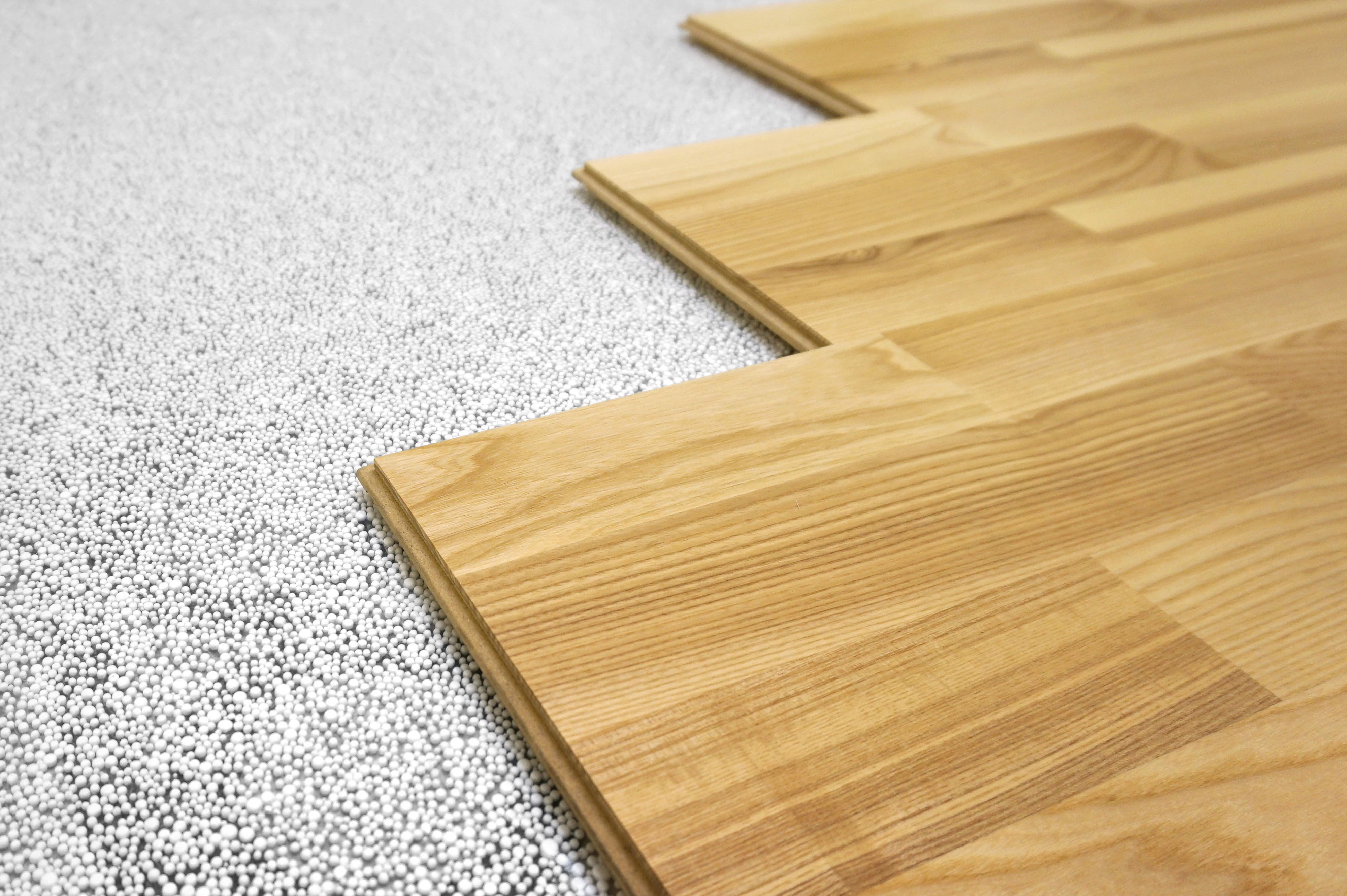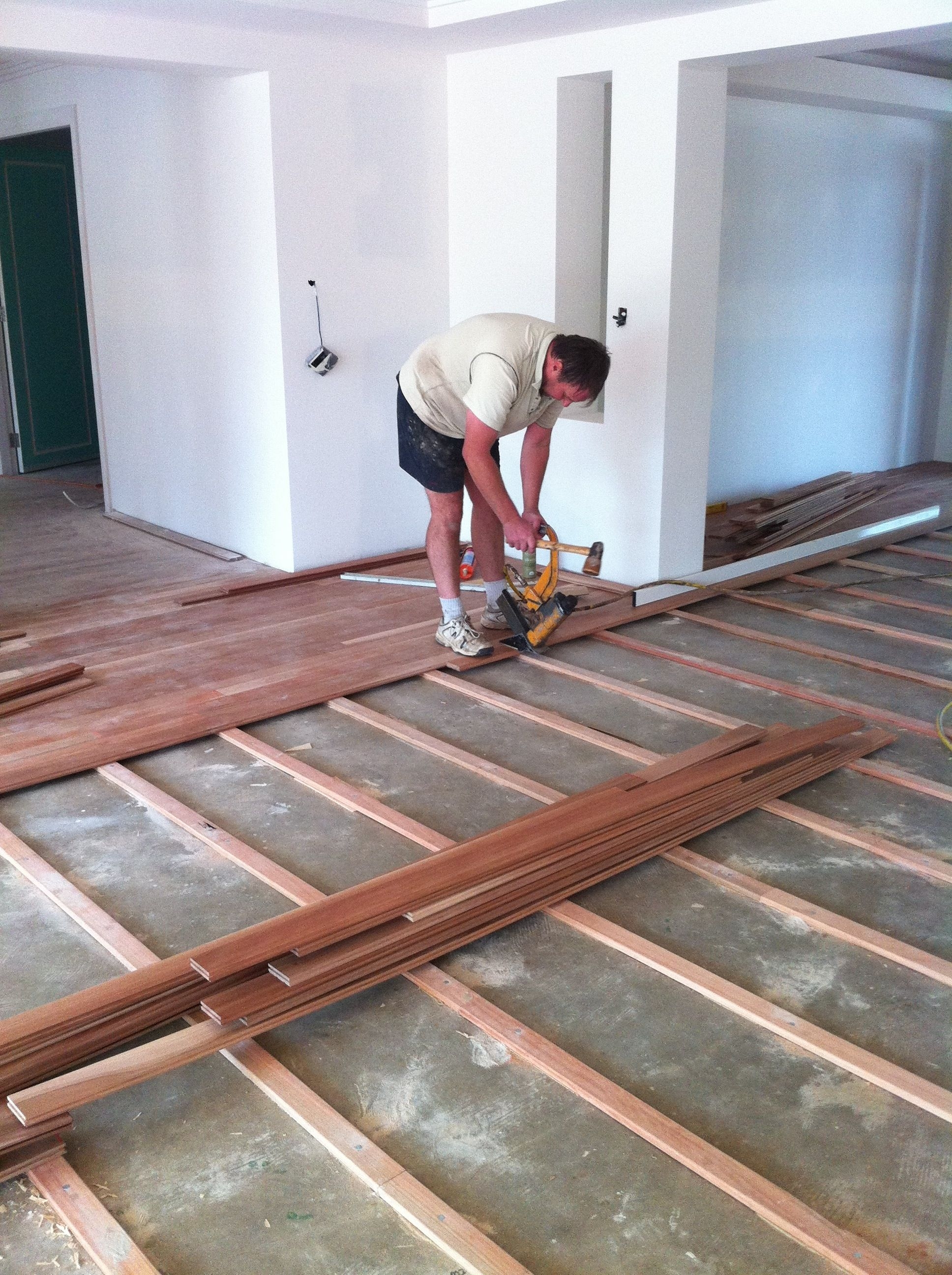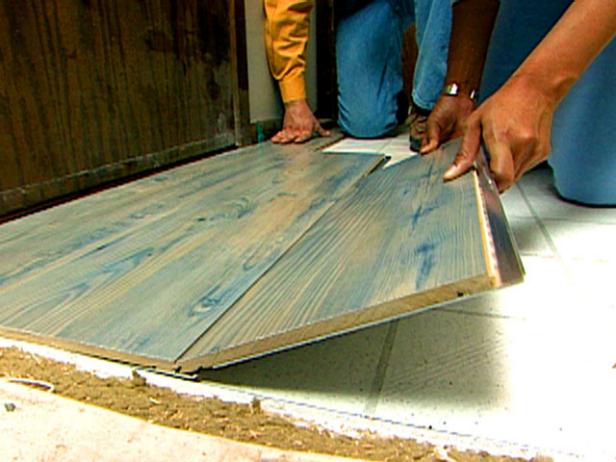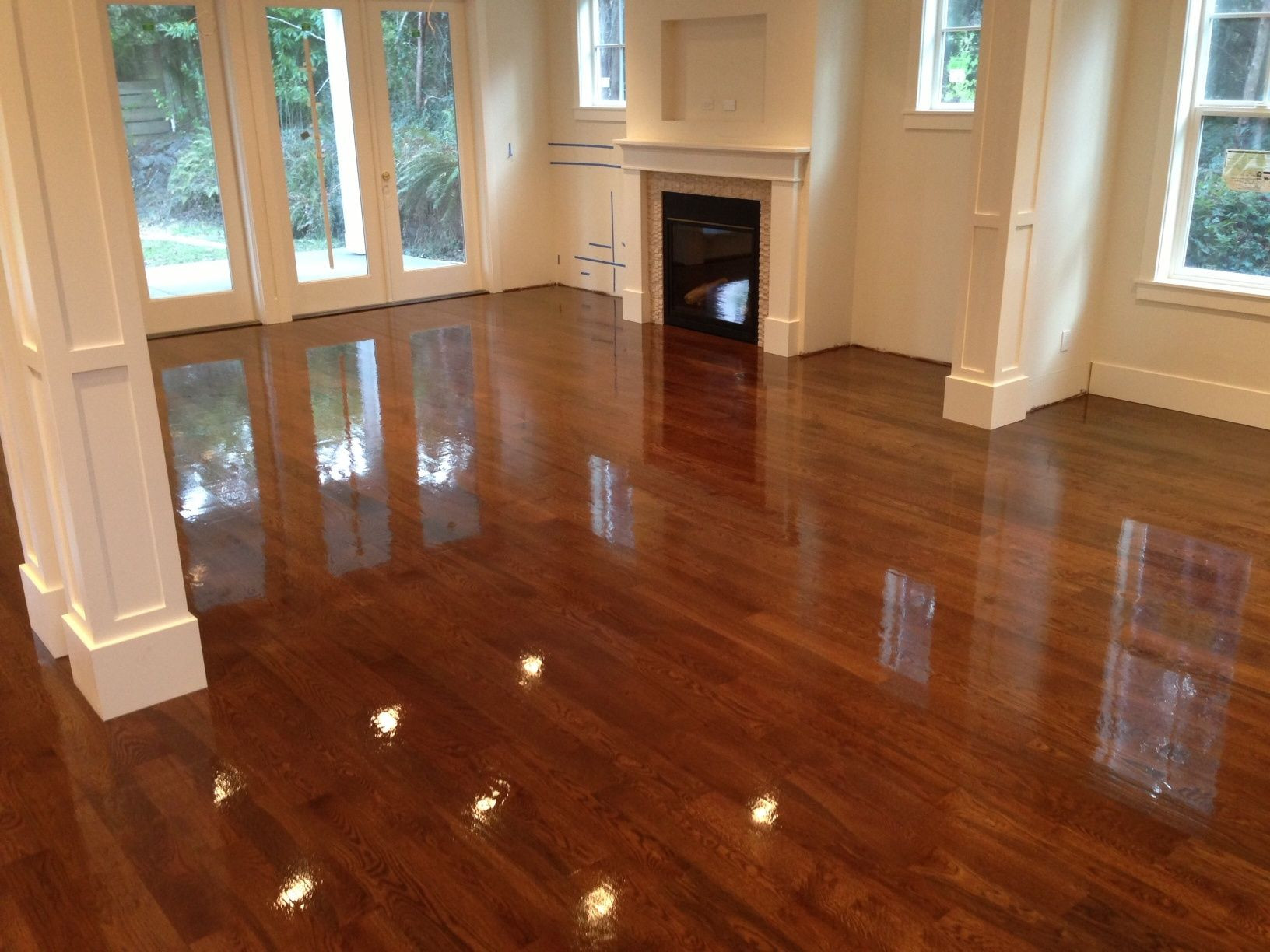
How to keep floating floors from sounding hallow. First of all, the floor is thinner. It’s probably best with a glue down floor to go over the floor with a weighted roller as you work. While underlayment is ideal for hardwood floors that haven’t been installed yet, if you already have hardwood floors down and you’re looking to soundproof them, there are several ways to do. If there are hollow spots here and there you can use an adhesive syringe after.
 How To Install A Floating Vinyl Plank Floor YouTube From youtube.com
How To Install A Floating Vinyl Plank Floor YouTube From youtube.com
The national wood flooring association recommends the substrate for an engineered hardwood floor to be no more than 3/16 inch deflection or variance in the slab. Step 2 add layers of building paper to all low areas you marked. But that is certainly not the norm, most customers do want the wood to be glued down. A floor underlayment is a sound barrier membrane that’s layered beneath your flooring surface to help deaden foot noise and other noise that could spread into the room below. It’s imperative that you look at the instructions to see the maximum recommended temperature of the subfloor. Check the floor for any nail that might have missed the joist at the area that produces the popping noise.
One major manufacturer says to never exceed a temperature of 85.
First of all, the floor is thinner. Maybe in the rooms below the installation but do little for the in room clockity. When a nail misses a joist, it rubs against the framing below, creating a popping sound. Soften the flooring placing a plush rug over the wood floor will dampen the noise level of the room. You might need to replace them more frequently. You can get rid of the noise on your vinyl floors by using the following techniques:

I agree if a floating application is chosen for an engineered product it will sound hollow when walked on. Determine what type of noise you’re dealing with impact noise airborne noise flanking noise locate the source of the noise ways to reduce noise from upstairs 1. The most common cause for hollow or loose spots in a wood floor system is not getting the concrete substrate flat to industry requirements. The national wood flooring association recommends the substrate for an engineered hardwood floor to be no more than 3/16 inch deflection or variance in the slab. If your subfloor was not flat before the.
 Source: youtube.com
Source: youtube.com
It’s probably best with a glue down floor to go over the floor with a weighted roller as you work. Remove the vinyl flooring and redo your subfloor. One major manufacturer says to never exceed a temperature of 85. Step 2 add layers of building paper to all low areas you marked. Those upsell underlayments, really do nothing to reduce noise resonance.
 Source: getfloors.com.au
Source: getfloors.com.au
If your subfloor was not flat before the. I agree if a floating application is chosen for an engineered product it will sound hollow when walked on. Determine what type of noise you’re dealing with impact noise airborne noise flanking noise locate the source of the noise ways to reduce noise from upstairs 1. This will give you a solid surface and eleminate the hollow sound. You can also use acoustic insulation.
 Source: pinterest.com
Source: pinterest.com
It’s probably best with a glue down floor to go over the floor with a weighted roller as you work. Determine what type of noise you’re dealing with impact noise airborne noise flanking noise locate the source of the noise ways to reduce noise from upstairs 1. You can also use acoustic insulation. I agree if a floating application is chosen for an engineered product it will sound hollow when walked on. To get the most out of your soundproofing project, you should consider turning your floor into a floating floor to get the most effective result.
 Source: instructables.com
Source: instructables.com
Second, it rests on the subfloor and a tiny bit of air; The third of our floating floor problems, peaking occurs when two laminate floor boards are forced together by pressure, which causes them to peak at the seam or joint,. Remove the vinyl flooring and redo your subfloor. Be for venturing down this path you first should check for moisture in the floor. Use the level to check for evenness.
 Source: deluxeartfloor.com
Source: deluxeartfloor.com
First of all, the floor is thinner. First of all, the floor is thinner. Second, it rests on the subfloor and a tiny bit of air; You might need to replace them more frequently. The national wood flooring association recommends the substrate for an engineered hardwood floor to be no more than 3/16 inch deflection or variance in the slab.
 Source: youtube.com
Source: youtube.com
Determine what type of noise you’re dealing with impact noise airborne noise flanking noise locate the source of the noise ways to reduce noise from upstairs 1. You might need to replace them more frequently. Those upsell underlayments, really do nothing to reduce noise resonance. Second, it rests on the subfloor and a tiny bit of air; Following are a few of the more common causes of squeaking, popping, and crunching noises in installed engineered wood floors.
 Source: rocktherm.com
Source: rocktherm.com
Second, it rests on the subfloor and a tiny bit of air; The most common cause for hollow or loose spots in a wood floor system is not getting the concrete substrate flat to industry requirements. Maybe in the rooms below the installation but do little for the in room clockity. Second, it rests on the subfloor and a tiny bit of air; If your subfloor was not flat before the.
 Source: youtube.com
Source: youtube.com
Use the level to check for evenness. While underlayment is ideal for hardwood floors that haven’t been installed yet, if you already have hardwood floors down and you’re looking to soundproof them, there are several ways to do. If there are hollow spots here and there you can use an adhesive syringe after. Use the level to check for evenness. Second, it rests on the subfloor and a tiny bit of air;
 Source: rocktherm.com
Source: rocktherm.com
Second, it rests on the subfloor and a tiny bit of air; But that is certainly not the norm, most customers do want the wood to be glued down. Step 2 add layers of building paper to all low areas you marked. The most common cause for hollow or loose spots in a wood floor system is not getting the concrete substrate flat to industry requirements. Use the level to check for evenness.
 Source: farrat.com
Source: farrat.com
I agree if a floating application is chosen for an engineered product it will sound hollow when walked on. Remove the vinyl flooring and redo your subfloor. But that is certainly not the norm, most customers do want the wood to be glued down. Those upsell underlayments, really do nothing to reduce noise resonance. While underlayment is ideal for hardwood floors that haven’t been installed yet, if you already have hardwood floors down and you’re looking to soundproof them, there are several ways to do.
 Source: youtube.com
Source: youtube.com
Remove the vinyl flooring and redo your subfloor. Remove the vinyl flooring and redo your subfloor. When a nail misses a joist, it rubs against the framing below, creating a popping sound. If there are hollow spots here and there you can use an adhesive syringe after. To do so, simply tape a 12 x12.
 Source: youtube.com
Source: youtube.com
- adjustable joist mounts if. The third of our floating floor problems, peaking occurs when two laminate floor boards are forced together by pressure, which causes them to peak at the seam or joint,. I agree if a floating application is chosen for an engineered product it will sound hollow when walked on. You can also use acoustic insulation. One major manufacturer says to never exceed a temperature of 85.
 Source: fcimag.com
Source: fcimag.com
I agree if a floating application is chosen for an engineered product it will sound hollow when walked on. You might need to replace them more frequently. If your subfloor was not flat before the. Those upsell underlayments, really do nothing to reduce noise resonance. If there are hollow spots here and there you can use an adhesive syringe after.
 Source: alquilercastilloshinchables.info
Source: alquilercastilloshinchables.info
Step 2 add layers of building paper to all low areas you marked. Maybe in the rooms below the installation but do little for the in room clockity. A floor underlayment is a sound barrier membrane that’s layered beneath your flooring surface to help deaden foot noise and other noise that could spread into the room below. If you still think that the issue is coming from under the tile, here are a few ways to go about it: The most common cause for hollow or loose spots in a wood floor system is not getting the concrete substrate flat to industry requirements.
 Source: youtube.com
Source: youtube.com
You can get rid of the noise on your vinyl floors by using the following techniques: You might need to replace them more frequently. Soften the flooring placing a plush rug over the wood floor will dampen the noise level of the room. It’s probably best with a glue down floor to go over the floor with a weighted roller as you work. Those upsell underlayments, really do nothing to reduce noise resonance.
 Source: diynetwork.com
Source: diynetwork.com
When a nail misses a joist, it rubs against the framing below, creating a popping sound. First of all, the floor is thinner. Soften the flooring placing a plush rug over the wood floor will dampen the noise level of the room. A floor underlayment is a sound barrier membrane that’s layered beneath your flooring surface to help deaden foot noise and other noise that could spread into the room below. 4) adjustable joist mounts if.
 Source: houzz.com
Source: houzz.com
I agree if a floating application is chosen for an engineered product it will sound hollow when walked on. The national wood flooring association recommends the substrate for an engineered hardwood floor to be no more than 3/16 inch deflection or variance in the slab. You can also use acoustic insulation. But that is certainly not the norm, most customers do want the wood to be glued down. First of all, the floor is thinner.
 Source: youtube.com
Source: youtube.com
The third of our floating floor problems, peaking occurs when two laminate floor boards are forced together by pressure, which causes them to peak at the seam or joint,. It is the nature of the beast. Determine what type of noise you’re dealing with impact noise airborne noise flanking noise locate the source of the noise ways to reduce noise from upstairs 1. Following are a few of the more common causes of squeaking, popping, and crunching noises in installed engineered wood floors. If there are hollow spots here and there you can use an adhesive syringe after.
 Source: discover.hubpages.com
Source: discover.hubpages.com
You can also use acoustic insulation. The third of our floating floor problems, peaking occurs when two laminate floor boards are forced together by pressure, which causes them to peak at the seam or joint,. Check the floor for any nail that might have missed the joist at the area that produces the popping noise. 4) adjustable joist mounts if. It is the nature of the beast.
 Source: rocktherm.com
Source: rocktherm.com
It is the nature of the beast. When a nail misses a joist, it rubs against the framing below, creating a popping sound. A floor underlayment is a sound barrier membrane that’s layered beneath your flooring surface to help deaden foot noise and other noise that could spread into the room below. First of all, the floor is thinner. It’s probably best with a glue down floor to go over the floor with a weighted roller as you work.
 Source: youtube.com
Source: youtube.com
I agree if a floating application is chosen for an engineered product it will sound hollow when walked on. I agree if a floating application is chosen for an engineered product it will sound hollow when walked on. Soften the flooring placing a plush rug over the wood floor will dampen the noise level of the room. Second, it rests on the subfloor and a tiny bit of air; Those upsell underlayments, really do nothing to reduce noise resonance.
 Source: rocktherm.com
Source: rocktherm.com
Check the floor for any nail that might have missed the joist at the area that produces the popping noise. Remove the vinyl flooring and redo your subfloor. To do so, simply tape a 12 x12. Following are a few of the more common causes of squeaking, popping, and crunching noises in installed engineered wood floors. 4) adjustable joist mounts if.
 Source: pinterest.com
Source: pinterest.com
It’s probably best with a glue down floor to go over the floor with a weighted roller as you work. One major manufacturer says to never exceed a temperature of 85. First of all, the floor is thinner. When a nail misses a joist, it rubs against the framing below, creating a popping sound. You might need to replace them more frequently.
 Source: youtube.com
Source: youtube.com
This will give you a solid surface and eleminate the hollow sound. The national wood flooring association recommends the substrate for an engineered hardwood floor to be no more than 3/16 inch deflection or variance in the slab. If your subfloor was not flat before the. You can get rid of the noise on your vinyl floors by using the following techniques: When a nail misses a joist, it rubs against the framing below, creating a popping sound.
This site is an open community for users to do submittion their favorite wallpapers on the internet, all images or pictures in this website are for personal wallpaper use only, it is stricly prohibited to use this wallpaper for commercial purposes, if you are the author and find this image is shared without your permission, please kindly raise a DMCA report to Us.
If you find this site good, please support us by sharing this posts to your preference social media accounts like Facebook, Instagram and so on or you can also save this blog page with the title how to keep floating floors from sounding hallow by using Ctrl + D for devices a laptop with a Windows operating system or Command + D for laptops with an Apple operating system. If you use a smartphone, you can also use the drawer menu of the browser you are using. Whether it’s a Windows, Mac, iOS or Android operating system, you will still be able to bookmark this website.